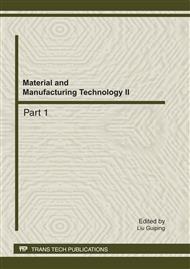p.231
p.242
p.247
p.252
p.256
p.261
p.265
p.271
p.276
Techanics Experiment Study on PcBN Cutting Tool Dry Turning Austenitic Stainless Steel AISI 304
Abstract:
High deformation hardening, low thermal conductivity, high built-up edge tendency of austenitic stainless steels were the main factors that make their machinablity difficult. For determination of the suitable cutting parameters in machining austenitic stainless steel AISI 304 by PcBN cutting tools, the samples which were prepared to be used in the experiment, 300 mm in length and 60 mm in diameter, were dry machined in a numerical control lathe. During experiments, dry turning parameters, such as feed rate, cutting speed and cut depth were investigated. The suitable cutting speed and feed rate were determined according to workpieces surface roughness, cutting tools flank wear. Finally, cutting speed of 180 to 200 m/min, feed rate of 0.05 to 0.06 mm/rev and cut depth of 0.10 mm gave the satisfied results.
Info:
Periodical:
Pages:
256-260
Citation:
Online since:
September 2011
Authors:
Price:
Сopyright:
© 2012 Trans Tech Publications Ltd. All Rights Reserved
Share:
Citation:


